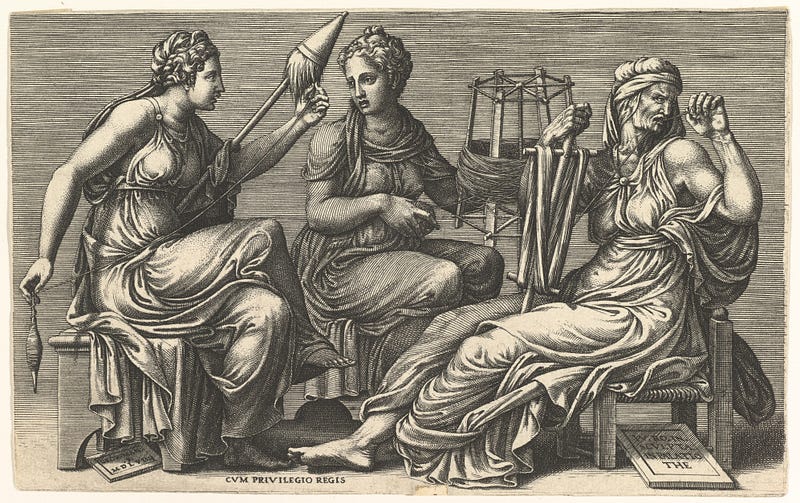# Exploring the Myth of Er: Choices and Consequences in Philosophy
Written on
Chapter 1: The Power of Myths in Philosophy
Myths, allegories, and folk tales serve as profound tools for expressing concepts that might not be easily conveyed through direct explanations. Throughout the ages, renowned educators, poets, sages, and philosophers have harnessed storytelling as a cherished and impactful educational approach. Among them, Plato stands out as a true master of this art.
Plato's account of the Myth of Er presents a philosophical framework that prompts us to live with intention and mindfulness, rather than being swayed by ephemeral desires. This narrative serves as a compass, guiding us to be more judicious in our decisions and to perceive our existence as an opportunity for spiritual growth. Although the imagery in this myth may provoke debate, approaching it from a philosophical standpoint—likely Plato’s ultimate aim—reveals that every human soul wields the power and accountability to make choices that either lead toward justice or injustice, rebirth or destruction. Regardless of our preferences, life in the cosmos and our earthly experiences consist of a sequence of choices, both good and bad, that dictate whether we perpetuate the cycle of reincarnation or attain liberation through enlightenment.
Section 1.1: The Journey of Er
Er, the son of Armenius of Pamphylia, was a brave warrior who met his end in battle. For ten days, his body lay among the fallen, until on the twelfth day, he revived while on the funeral pyre and began to recount his experiences beyond life.
His soul, having departed from his body, traveled with other souls to a realm with two chasms on earth and two more in the sky. Judges presided between them, directing the virtuous to ascend to the right and upward into the heavens, while the unvirtuous descended to the left and downward. Er was instructed to observe and report back to the living what he witnessed.
The souls he saw were either rising from the earth, dusty and parched, or descending from the heavens, radiant and cleansed. They gathered in a meadow known as Leimonas, reminiscent of a festival. Those emerging from the earth mourned for the suffering they endured during their thousand-year journey underground, while those from the skies shared tales of their joys and wonders.
Section 1.2: The Consequences of Choices
The souls who had committed various offenses faced severe retribution, while those who led virtuous lives received tenfold rewards. The punishments intensified for those who had disrespected their parents or the divine, or for those who had committed murder. Ardiaeus, a tyrant from Pamphylia, was bound and dragged over thorns before being cast into Tartarus.
After seven days in Leimonas, the souls journeyed to a location where they beheld a light, brighter and purer than a rainbow, extending across the cosmos. This light, a connection between heaven and earth, governed all celestial movements. Suspended from this light was the spindle of Necessity, regulating the rotations of the universe. Seven additional flywheels surrounded the central spindle, each attended by Sirens that harmonized to create the music of the spheres. The three Fates—Lachesis, Clotho, and Atropos—monitored the movement of these wheels from their thrones.
Arriving at this central point, the souls faced the critical task of choosing the lives they would lead in their next incarnations. A herald of Lachesis presented diverse life models, reciting the Word of Fate that compelled the souls to select their destinies.
The unphilosophical souls rushed to claim lives of glory, often overlooking the hidden burdens that accompany such heights. Conversely, those who had endured hardships in previous existences chose more wisely, avoiding the allure of superficial splendor. Each decision was irrevocable, leading the souls through a barren land of forgetfulness to the Amelita River. Drinking from this river caused them to forget their past experiences.
At the stroke of midnight, amidst thunder and earthquakes, the souls began their ascent to be reborn into new forms. Er, however, was not permitted to drink from the river of oblivion. His return to consciousness was a mystery, but he found himself once again on the funeral pyre.
Chapter 2: Reflections on Choices and Growth
After contemplating the Myth of Er, it becomes evident that it mirrors our earthly experiences, illustrating the ramifications of our decisions and the ease with which we may repeat past mistakes in new contexts. Yet, as the soul engages in philosophical reflection, this mirrored image can transform into a beacon of guidance, representing courage, prudence, wisdom, and, above all, justice.
